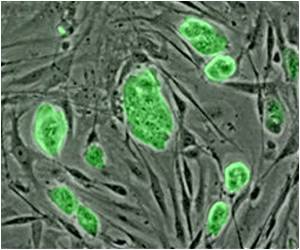Owing to their 85 percent identical genomes, mouse act as the best substitute for humans in medical research.
Evolutionary biologists at University of Michigan have found that genes in mouse and man act differently although they are nearly identical.
The results of this study by Ben-Yang Liao and Jianzhi Zhang may have implications for the use of mouse models in studying human disease,"Everyone assumes that deletion of the same gene in the mouse and in humans produces the same phenotype (an observable trait such as presence or absence of a particular disease). That's the basis of using the mouse to study human disease. Our results show that may not always be the case," said Zhang, an associate professor of ecology and evolutionary biology.
The study mainly focused on so-called essential genes, which through their effects on survival or fertility, are necessary for organisms to reach sexual maturity and reproduce. Later, the researchers closed in on 120 essential human genes for which the mouse has an identical counterpart that also has been studied. Then, they consulted a database that catalogs the results of experiments in which the mouse equivalents of human genes are deleted, or "knocked out."
It was believed that deleting any of those 120 essential human genes, also essential in the mouse, should result in infertility or death before reproductive age. But the results derived from the database had a different story to tell.
"To our surprise, 22 percent of the 120 human essential genes are nonessential in the mouse. I expected there would be some, but I never expected the percentage to be so high," said Zhang.
In order to understand why the "essentiality" of some genes has changed in the time since human and mouse last shared a common ancestor, the researchers focussed closely at the protein products of the individual genes that are essential in humans but nonessential in the mouse.
Advertisement
"The main function of the vacuole is to contain and degrade cellular wastes and toxins. In humans, the absence of vacuole proteins causes those wastes and toxins to accumulate, often leading to fatal neurological diseases," said Zhang.
The researchers speculated that in the course of primate evolution, as life span increased and reproductive age was delayed, efficient waste management became increasingly important.
This idea was supported with additional results of their analysis. They developed an index that incorporated metabolic rate (a measure of how fast cellular waste products are generated) and reproductive age, and then used that index to compare human and mouse. They found out that the total amount of waste produced per gram of body mass from birth to reproductive age is about 18 times higher for humans than for the mouse.
"Hence, waste management is much more important in humans than in the mouse for maintaining proper cellular functions until the time of reproduction. And when a biological process becomes more important to a species, the genes involved in that process tend to become essential," said Zhang.
Besides, the results raise concerns about the widespread use of mouse models for studying human disease.
"Our study does not say that mouse models are useless. Even for those genes that have changed essentiality, the mouse model may provide useful information. For example, it may tell us the molecular function of the gene, even if the gene's importance differs between species. But for some diseases, such as neurological diseases related to vacuole proteins, the phenotype is so different that it may be necessary to establish a primate model," said Zhang.
The study appears in the current issue of the journal Proceedings of the National Academy of Sciences (PNAS).
Source-ANI
RAS/L







